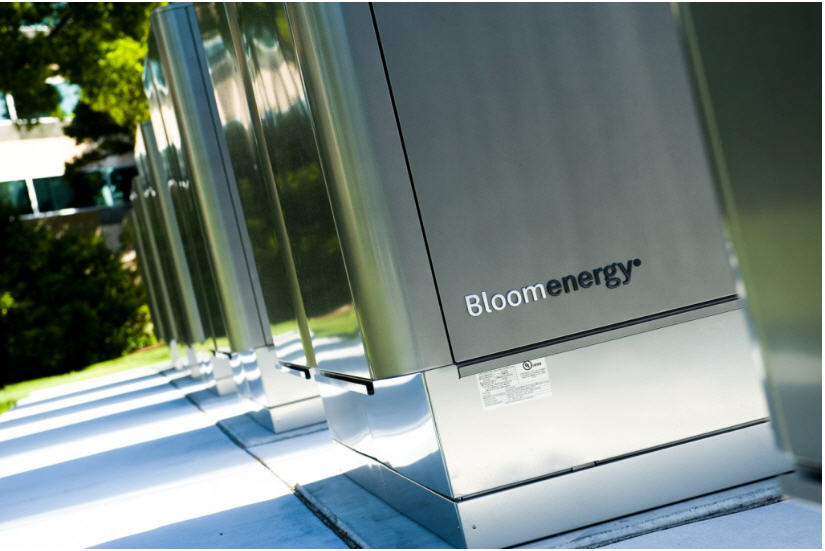
Hydrogen as a fuel for industrial applications, transportation, distribution and power generation, and for energy storage, is gaining worldwide momentum as a key component in the pursuit of decarbonization.
The Federal Energy Regulatory Commission’s (“FERC”) latest proposed change in its regulations implementing the Public Utility Regulatory Policies Act of 1978 (“PURPA”) is another potential boost for the use of hydrogen in power generation.
On October 15, 2020, FERC issued a notice of proposed rulemaking (Docket No. RM21-2-000)(“NOPR”) in which it proposes to specify that the “useful thermal energy output” of a topping cycle qualifying cogeneration facility (“Cogeneration QF”) includes the thermal energy produced by a Solid Oxide Fuel Cell that then uses the thermal energy it produces to reform methane and produce hydrogen for electricity generation.[1] FERC’s action is in response to a petition for rulemaking submitted by Bloom Energy Corporation (“Bloom Energy”) in Docket No. RM20-20-000. The Edison Electric Institute opposed Bloom Energy’s petition, and we expect that the electric utility industry will challenge FERC’s proposed rule.
As FERC explains, when Congress enacted PURPA more than 40 years ago, it could not have envisioned and did not predict the specific technological developments that would occur in the industry over the following decades.[2] Instead, Congress provided FERC broad discretion to implement PURPA to recognize and promote new generation technologies that foster energy efficiency and conservation.[3] “[T]echnological advances in utilizing the thermal energy from a Solid Oxide Fuel Cell in an integrated steam hydrocarbon reformation process were not known or anticipated when FERC adopted its original definitions for ‘useful thermal energy’’’ in a Cogeneration QF.[4]
FERC finds that Solid Oxide Fuel Cell systems with integrated natural gas reformation equipment have become a viable option for efficient electric energy cogeneration, “furthering PURPA’s goal of encouraging the innovation and development of cogeneration facilities….”[5] Fuel cell conversion of chemical energy in hydrogen to electric energy, without combustion, “has been characterized as a significant improvement in the efficiency of electric generation.”[6] In addition, “industrial applications of hydrogen continue to grow, with distributed production of hydrogen becoming increasingly important.”[7] Accordingly, FERC finds that Solid Oxide Fuel Cell systems with integrated natural gas reformation equipment represent “continuing progress in the development of efficient electricity generating technology,” and there has been “a sufficient change in circumstance” to support this proposed rule change.[8] Notably, FERC acknowledges it has previously held that for Cogeneration QFs “the use of thermal energy must be completely independent of the power production process.”[9] FERC notes that those cases did not consider fuel cell technology, unlike its proposed rule. Under the proposed rule, the production of hydrogen in a Solid Oxide Fuel Cell system with an integrated natural gas reformation process will be considered an industrial process that yields “useful thermal energy output” for a Cogeneration QF.
Importantly, FERC is proposing to qualify only thermal energy produced in Solid Oxide Fuel Cell systems with integrated natural gas reformation.[10] If the fuel cell’s natural gas reformation equipment were located offsite, then waste heat would not be available to aid the reformation process, which FERC determines would be inefficient and inconsistent with Congress’s goal in enacting PURPA.[11]
FERC’s proposal only modifies the “useful thermal energy output” requirement for a Cogeneration QF. Like any new Cogeneration QF, a Solid Oxide Fuel Cell system seeking to sell electric energy pursuant to Section 210 of PURPA must demonstrate in its Form 556 certification that it is using the thermal output in a “productive and beneficial manner,” considering factors such as whether the product produced by the thermal energy is needed and whether there is a market for the product, and the “fundamental use test,” meaning that the electrical, thermal, chemical and mechanical output of the facility is used fundamentally for industrial, commercial, residential or institutional purposes.[12]
Comments on FERC’s NOPR are due 30 days following publication in the Federal Register.
Source: King and Spalding
[1] Fuel Cell Thermal Energy Output (Notice of Proposed Rulemaking), 171 FERC ¶ 61,050 (2020).
[2] Id. at ¶ 3.
[3] Id.
[4] Id. at ¶ 17.
[5] Id. at ¶ 4.
[6] Id. at ¶ 11.
[7] Id. at ¶ 4.
[8] Id. at ¶¶ 4, 18.
[9] Id. at ¶ 17 fn. 35, citing EG&G, Inc., 16 FERC ¶ 61,060 at 61,104 (1981).
[10] Id. at ¶ 5.
[11] Id. at ¶¶ 5, 13-14.
[12] Id. at ¶ 10, citing 18 C.F.R. § 292.205(d).
Read the most up to date Fuel Cell and Hydrogen Industry news at FuelCellsWorks




